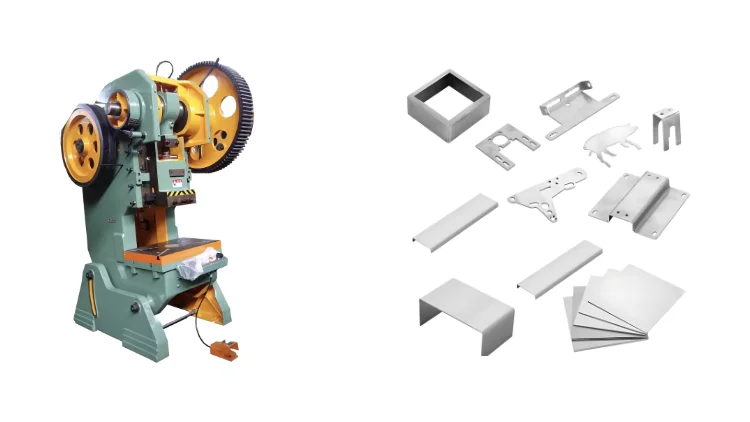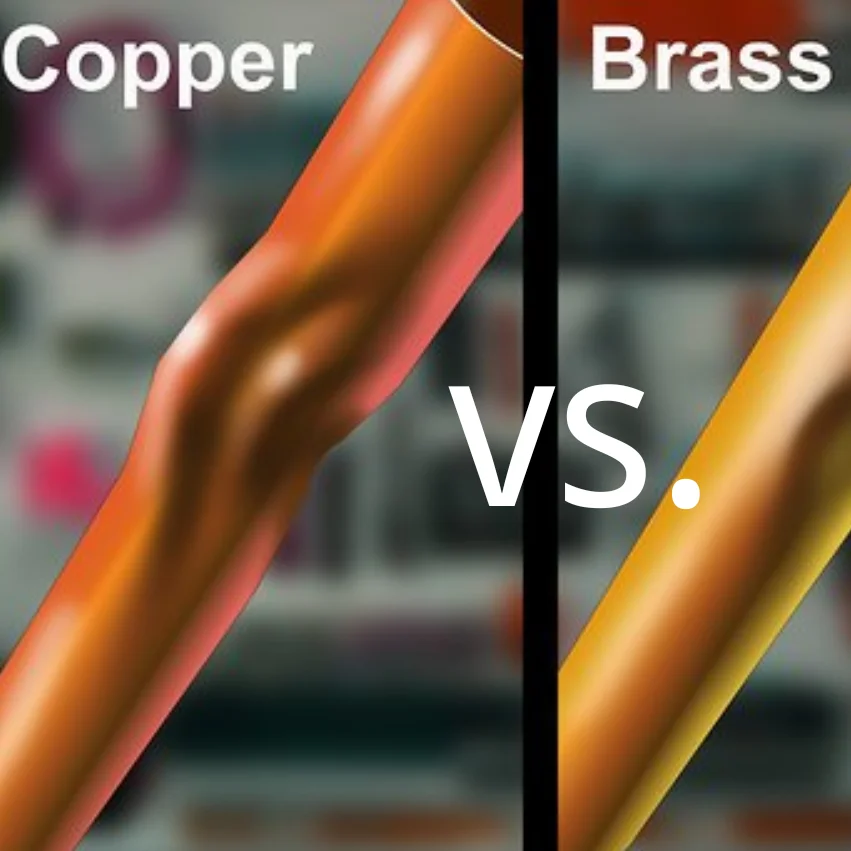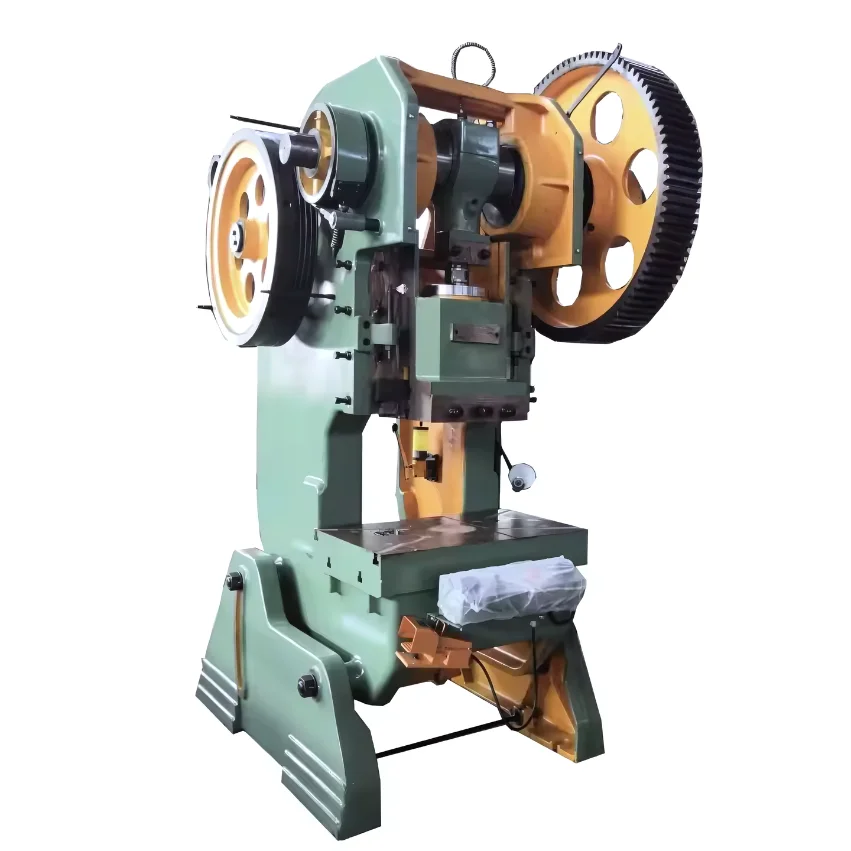Metal stamping processes sheet metal into various shapes and parts by means of a press and a die. It has many advantages and is widely used in various industries such as automotive, aerospace, electronics, and home appliances, covering various metal types of stamping dies and stamping processes.
In this article, we will focus on introducing you to what metal stamping is, as well as the types of metal stamping.
Click here to learn more about stamping technology.
What is Metal Stamping?
Metal stamping is a process that uses dies, presses, and other equipment to shape, cut, or form sheet metal. It has an advantage over other metal forming processes because it can produce large quantities of parts quickly and efficiently.

Metal Stamping Steps
- Design and Build the Mold: First, you need to design the mold to form the product. Make sure the designed mold meets the product specifications.
- Install the Die: Install the die on the stamping machine.
- Placement: Place the sheet metal into the stamping machine.
- Stamping: The press pushes the sheet metal into the die and forms or cuts it according to the design requirements.
- Disassembly and Inspection: Remove the stamping from the press and check its quality and accuracy.
- Machining: After forming the stamping, trim or cut the excess material and edges.
Metal Stamping Advantages and Disadvantages
Here are some of the main advantages and disadvantages of metal stamping:
Advantages of Metal Stamping
- High Efficiency: You can produce a large number of parts quickly, with a short stamping cycle, making it suitable for mass production.
- High Precision: The tolerance of metal stamping can usually reach between ±0.01 mm (10 microns) and ±0.05 mm.
- Versatility: Different metals can be stamped, including steel, aluminum, and copper.
- Integrated Operations: The metal stamping process can integrate multiple processes such as punching, blanking, bending, and embossing into one press.
Disadvantages of Metal Stamping
- High Initial Investment: The initial cost of designing and making molds is relatively high, especially for more complex parts.
- Material Thickness Limitation: Generally only suitable for relatively thin metal materials, Thicker materials are difficult to stamp.
- High Maintenance: Stamping dies wear out over time, especially in high-volume production. Repairs and replacements are expensive.
Metal Stamping Application Areas
- Automotive: can produce a variety of automotive components such as panels, brackets, chassis components, and transmission components.
- Electronics: can be used to make components such as connectors, contacts, springs, and brackets.
- Aerospace: Manufacturing aircraft components.
- Consumer Products: Manufactures components such as appliances, tools, and household items.
- Construction: Produces various structural components. Such as panels and fixed brackets.

Types of Metal Stamping
Metal stamping is a metal-forming technology widely used in the manufacturing industry. It mainly relies on presses and dies to process metal sheets into specific shapes and sizes. The types of metal stamping can be classified from two main aspects: metal stamping die type and metal stamping process.
Metal Stamping Die Types
Stamping dies specifically serve to form, cut, and process metal materials during the metal stamping process. Common types of dies include the following:
Single Station Mold
The single-station die includes an upper die and a lower die, mounted on the slide and workbench of the punch press respectively. During the punching process, the punch drives the slide, moving the upper die downward to cooperate with the lower die in punching, shaping, or stamping the metal material.
Multi-Station Mold
The multi-station mold consists of a series of stations with different functions, each of which is responsible for performing a specific processing task, such as punching, bending, or forming. The metal material is continuously fed into the mold in strips or sheets. As the punch press cycles, the material gradually moves to the next station. After being processed at each station, the material is gradually deformed and finally processed into a finished product at the last station.
Composite Mold
The compound die combines multiple stamping processes in one station. When the operator starts the stamping machine, the upper die descends and works closely with the lower die to simultaneously perform cutting, bending, deep drawing, and other processes.
9 Types of Metal Stamping Processes
Here are 9 common metal stamping processes:
Blanking
Blanking is a stamping process that uses dies to cut larger sheets or rolls of metal into smaller or more manageable parts. This process effectively separates the part from the larger sheet without changing its thickness.
Punching
Although the punching process is similar to the blanking process, there are differences. Punching is the process of using a die to make holes or complex cuts in metal sheets. This process does not result in part separation, but only removes material from the workpiece to form an opening.
Drawing
Drawing uses a specific mold to put metal into the mold and then uses a stamping machine to form the metal into the required part shape. It is commonly used to produce containers and automotive parts that require deep-drawn components.
Bending
During the bending process, place metal on a die and use a punch to push the metal, bending it to the desired angle or shape.
Forming
Forming uses specialized dies and punches to cut contours, reliefs, and three-dimensional shapes on metal surfaces. Molding is often used to manufacture parts with complex designs or specific functional requirements.
Embossed
Embossing utilizes two complementary dies to extrude metal into raised or depressed shapes. Usually used to process metal casings, plates, engine casings, car hoods, door frames, etc.
Flanging
Flanging is the process of molding metal into the desired flange shape using a die and punch to apply pressure. This process is usually used for panels or housings.
Casting
By placing a metal sheet or part into a mold and applying high pressure, you form the metal into the desired product shape. This method is mainly used to make coins, medals, and precision parts.
Hamming
Used to fold or bend the edge of a metal sheet back onto itself. Often used to make automotive parts, panels, etc.
Summary
Metal stamping is a manufacturing process that uses presses, dies, and other equipment to press sheet metal into specific shapes and sizes. In addition, metal stamping uses a variety of die types to form, cut, or shape metal sheets into precision parts.
If you are looking for metal stamping services, you can contact us today to get a quote for your project. We offer metal stamping as well as a variety of additional machining services.




